
Alex Megos has made the fourth ascent of Change (9b+), in Hanshelleren Cave, Flatanger, Norway.
Megos climbed the route in just his fifth session, without having climbed either of the route's two pitches in isolation.
Change, which Adam Ondra made the first ascent of in October of 2012, was the world's first route at 9b+.
The route waited eight years before it received its second ascent at the hands of Stefano Ghisolfi in 2020. Whilst Ondra climbed the route without kneepads, Ghisolfi used kneepads during his ascent, which appears to ease the intensity of the 'pitch 1' crux - albeit in a way that introduces a strenuous cut-loose.
By way of comparison, footage of Ondra climbing through that section is available here, and footage of Ghisolfi climbing that same section is available here.
It is worth noting that, had kneepad use been as pervasive in 2012 as it is today, Ondra - who is no stranger to a kneepad - would likely have used them during his own ascent. Writing on his website in 2021, Ondra said:
'My opinion is that it is just an evolution of climbing and most of us do not consider climbing shoes or chalk bag cheating. It is sad even for me to sometimes see that a certain classic climb can be climbed in a different way with the use of a kneepad, often making it a worse and less homogenous route'.
'But it is something we must accept. Even for me, it was not easy to see Stefano Ghisolfi in Change, using the kneepads in places where it was not possible for me without kneepads, but it is evolution and in this case, fortunately I do not think it changes the grade'.
Ghisolfi described the crucial kneebar as 'the hardest [he had] ever done', and yet, when Seb Bouin made the third ascent of the route in 2022 - again using kneepads - he suggested that using kneepads made the route closer to a 9b/+.
Bouin said at the time:
'There are multiple kneebars which are crucial at different points of this route (some on the cruxes, and some for rests). The kneepads are helping, for sure'.
'The kneepads really help on the first crux (where Adam was twisting his back and shoulders). It's still really hard, but a bit less than before I think. Kneepads make this one a bit less of a gamble. And the whole process is a bit more easy in the head I think'.
'I don't think it makes a huge difference due to the really good rest you get before the second part. Even with the original beta on Pitch 1, you would still be able to rest 100%'
Bouin eventually concluded that, when compared with Nordic Marathon (9b+) and Move (9b+), the respective difficulties of the three routes dictated that, in his opinion, both Change and Nordic Marathon should be graded 9b/+, whilst Move was deserving of 9b+.
The fourth ascent of the route echoed the third and the second, with Megos electing to use a kneepad for the route, as Ghisolfi and Bouin did. Sharing news of his ascent on Instagram, Megos said:
'Change - 9b+. Words can hardly describe my feelings right now. The disappointment from Paris was still so present when we arrived in Flatanger. I desperately needed a vacation, but I also wanted to check out some routes'.
'I guess I'm not the guy for big vacations. After four days of checking out Change I was able to link both pitches on day five. I hadn't done either one of the parts individually, but I felt like with a really good try I could actually send. Thankfully that really good try was the first real attempt I made from the ground with a potential send in mind'.
'I used one kneepad on my right knee, which does make the crux of the first pitch a little easier than the original beta from Adam Ondra. The top doesn't change too much with a kneepad, when you have really bad kneebar skills like mine. The rests feel more comfortable though'.
'I'm still far away from the kneepad wizardry other people have mastered (but I'm willing to learn). Hats off to Adam Ondra for doing the FA 12 years ago!!! Felt like climbing a real piece of history'.
Whilst Megos' use of a kneepad is in line with both Ghisolfi and Bouin's, it is somewhat surprising given how critical he has been of their use, especially when they were not used during the route's first ascent.
Speaking on The Struggle Climbing Show last year, he stated 'I feel like if the first ascent of the route has been done without kneepads, then that's the style you should try to repeat it in, and I've just noticed that lots of people they just want to take the grade, you know, but they don't want to put in enough effort, so that's always a big problem'.
'My opinion is that people should just try to repeat it that same way that the first ascender did. Obviously most people don't want to do that, that's fine, and I guess then the route in some cases needs to be downgraded'.
Regardless of the kneepad/no kneepad debate, Megos' ascent of Change is one of his hardest to date, after Perfecto Mundo (9b+) and Bibliographie (9b+), and the fact that he climbed the route in only five sessions - without having climbed either pitch in isolation beforehand - is remarkable.
Having recently missed out at the Olympic games in Paris, where he finished in 13th place overall, it will be intriguing to see whether Megos' training for the Olympics continues to see him reap the rewards on rock.

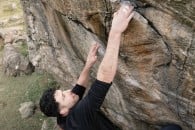


















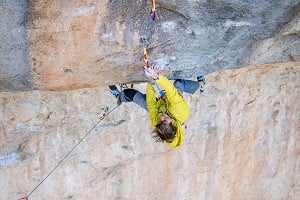

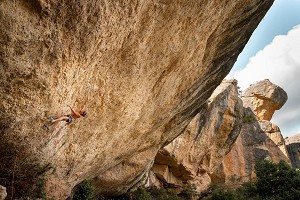
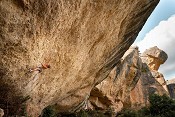

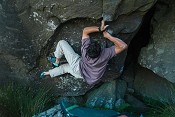
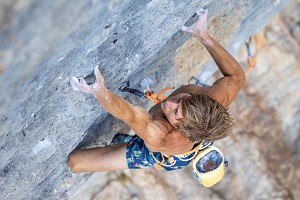
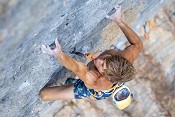
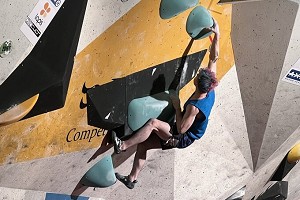
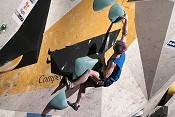
Comments
Enjoyable article thanks for the detail
If we are to truly push the envelope of human movement then surely naked ascents of the hardest lines need to become a thing
Dunno if you ever watched the spanish dude free solo naked with an apes mask.
Climbing, like everything evolves, the sport progressed from hob-nailed boots to EB’s to sticky rubber, to the use of chalk. We’ve gone from siege mountaineering to climbing crags as “preparion for the mountains”, to trad climbing, then sport climbing, bouldering, high balling, deep water soloing, dry tooling …. Use of knee pads is simply part of this evolution.